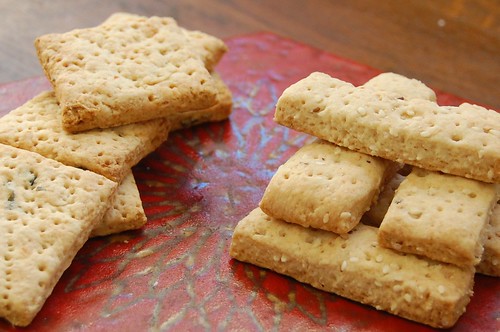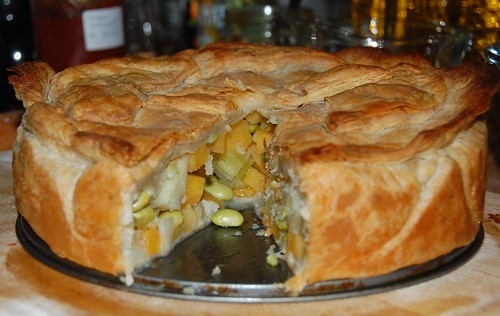 Khara Biscuits and Moroccan Cookies
Khara Biscuits and Moroccan CookiesEvery day I look through my blog feeds and scan through
Foodgawker looking for interesting ideas and recipes that I might like to try. In the last week or so I spotted two recipes on very different sites, from very different countries and was intrigued to see how closely the methods and results of the recipes were similar whilst still remaining true to the cultures that created them.
These recipes produce old fashioned, crunchy, almost rusk like biscuits, rather dry and simple and yet taken with tea ideally suited for a light snack or restorative break.
The
Khara Biscuits are spicy, fragrant with ginger and curry leaves and originate in Bangalore. Enjoy them with chai or another spicy brew. I based my recipe on the one at
Red Chillies.
200g plain Flour
50g vegan margarine
1 tsp baking powder
1/2 tsp salt (I thought even this much was a bit too much so go carefully)
3 tsp sugar
10ml water
Spice/Herb mix.
You need about 1 mixed tablespoon of grated ginger, grated green chilli, grated lemon grass and finely chopped curry leaves. I made mine from a thumb sized piece of ginger, half a large chilli, 1 thin stem of lemon grass (just the tender bulb end) and about 10 curry leaves. The original recipe calls for green coriander but I didn't have any so substituted the lemon grass. If the chilli is frozen it grates really easily on a microplane.
Heat the oven to 180C. You'll need one large baking tray.
Mix the dry ingredients together well.
Rub the margarine in with your fingers as if making short crust pastry. You should be aiming for a finish rather like bread crumbs.
Add the spice paste. This is moist and should start to form a dough in the bowl as you mix it in. Make sure it is evenly distributed then add about 1 teaspoon of water. You should now be able to form a stiff dough. Press the loose crumbs together firmly and gather everything up into a smooth ball. If you really need to add another teaspoonful of water but try to add as little as possible. It needs to be very stiff.
Roll the dough out to about 1/2 cm thick, prick all over with a fork and cut the shapes required. I used a pizza cutter to form (not very) squares but the mixture is stiff enough to use cutters if you'd like to. Gather up the offcuts and re-roll until it's all used up. Arrange the biscuits on the baking sheet, brush with oil and bake for about 20 minutes until golden.
Yield: about 24 depending on size chosen.
The
Moroccan cookies seem to be big in Israel. I found the recipe on
Food Bridge although it made an enormous quantity which I've reduced to a quarter. Researching later I also found a twice baked version called Fekkas which like biscotti are cooked, sliced and cooked again. It looks interesting enough to try another time but this much simpler form will give you a taste of the delights that can be yours.
250g plain flour
20g ground rice
1 tsp. baking powder
50g sugar
20g sesame seeds
2 tsp. anise seeds (or fennel at a pinch)
1 tsp. grated orange zest
60g oil
100ml water or orange juice
Preheat the oven to 180C. You will need one large baking sheet.
Mix all the dry ingredients, flour, ground rice, baking powder, sugar, sesame seeds, anise and orange zest in one bowl.
Combine the oil with about half the water or orange juice and whisk well. Mix this into the dry ingredients with a fork then slowly the rest of the liquid kneading with your hands so that the mixture forms a firm ball. You may not need all the liquid, try not to add too much more than 100ml. This dough needs to be firm.
Roll the dough out to about 1/2 cm thick. Prick all over with a fork. This biscuit is traditionally shaped as a narrow rectangle but you can use any shape you like. Gather up the trimmings and repeat until all the dough is used.
Bake for 20-25 minutes. They should be lightly golden and crisp when cooked.
Delicious with mint tea. Yield: about 25-30 depending on size chosen.
Both sorts of biscuits store well in an airtight tin.





